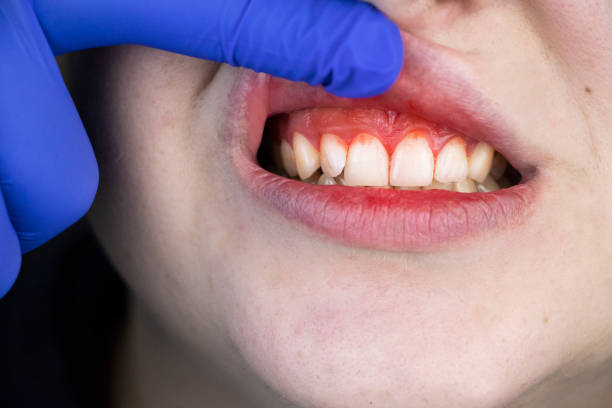What is Gingivitis?
Gingivitis is an inflammation of the gums that can lead to gum disease. It is usually caused by a build-up of plaque on the teeth, which is a sticky film of bacteria that forms on the teeth and gums. Plaque that is not removed by brushing and flossing can harden into tartar, which can only be removed by a dentist or dental hygienist. Gingivitis can cause the gums to become red, swollen, and bleed easily. If left untreated, it can progress to more serious forms of gum disease, such as periodontitis.
Causes of Gingivitis
There are several things that can cause gingivitis:
Poor oral hygiene: Plaque and tartar can build up on the teeth if they are not regularly brushed and flossed, leading to gingivitis.
Hormonal changes: Hormonal changes in the body, such as those that occur during puberty, pregnancy, and menopause, can make the gums more sensitive and prone to gingivitis.
Certain medications: Some medications can cause the gums to become dry or reduce the flow of saliva, which can lead to gingivitis.
Tobacco use: Tobacco use can increase the risk of developing gingivitis and other oral health problems.
Illnesses: Some illnesses, such as HIV/AIDS and cancer, can weaken the immune system and make it harder for the body to fight off infection, including gingivitis.
Genetics: Some people may be more prone to developing gingivitis due to their genetic makeup.
Symptoms of Gingivitis
The most common symptoms of gingivitis are:
Red, swollen gums that may be tender or painful when touched
Gums that bleed easily, especially when brushing or flossing
Bad breath that does not go away
A bad taste in the mouth
Gums that look like they are pulling away from the teeth
If you have any of these symptoms, it is important to see a dentist as soon as possible to get treatment. If gingivitis is not treated, it can progress to more serious forms of gum disease, such as periodontitis.
Treatment of Gingivitis
The main treatment for gingivitis is to remove the plaque and tartar that have built up on the teeth. This can be done through a process called scaling and root planing, which is performed by a dentist or dental hygienist. Scaling involves removing the plaque and tartar from above and below the gum line, while root planing involves smoothing out the roots of the teeth to help the gums reattach to the teeth.
In addition to scaling and root planing, your dentist may recommend other treatments, such as:
Medications: Antibiotics or antimicrobial mouthwash may be prescribed to help kill the bacteria that cause gingivitis.
Improved oral hygiene: Brushing and flossing regularly and properly can help prevent the build-up of plaque and tartar on the teeth. Your dentist can show you the best way to brush and floss to help keep your teeth and gums healthy.
Changes in diet: Eating a healthy diet that is low in sugar can help prevent gingivitis.
Quit tobacco use: If you use tobacco, quitting can help improve your gum health.
It is important to see a dentist for regular check-ups and cleanings to help prevent gingivitis and other oral health problems.
Prevention of Gingivitis
There are several things you can do to prevent gingivitis:
Brush your teeth twice a day with a fluoride toothpaste.
Floss daily to remove plaque and food particles from between your teeth and along the gum line.
Use an antimicrobial mouthwash to kill bacteria and freshen your breath.
Eat a healthy diet that is low in sugar.
Avoid tobacco use, or quit if you currently use tobacco.
See a dentist regularly for check-ups and cleanings.
If you have a medical condition that puts you at higher risk for gingivitis, be sure to follow your dentist's recommendations for maintaining good oral hygiene.
By following these preventive measures, you can help keep your gums healthy and reduce your risk of developing gingivitis




Post a Comment